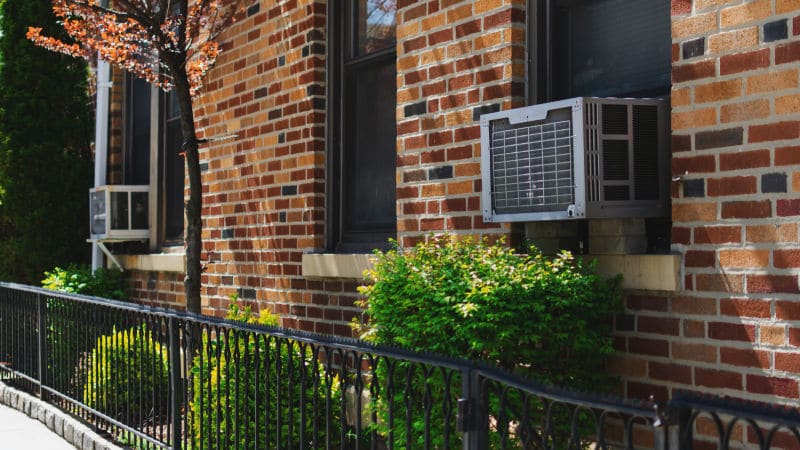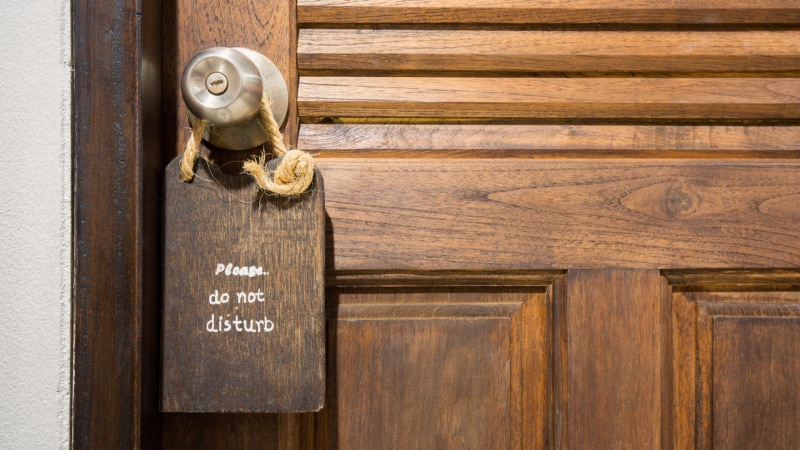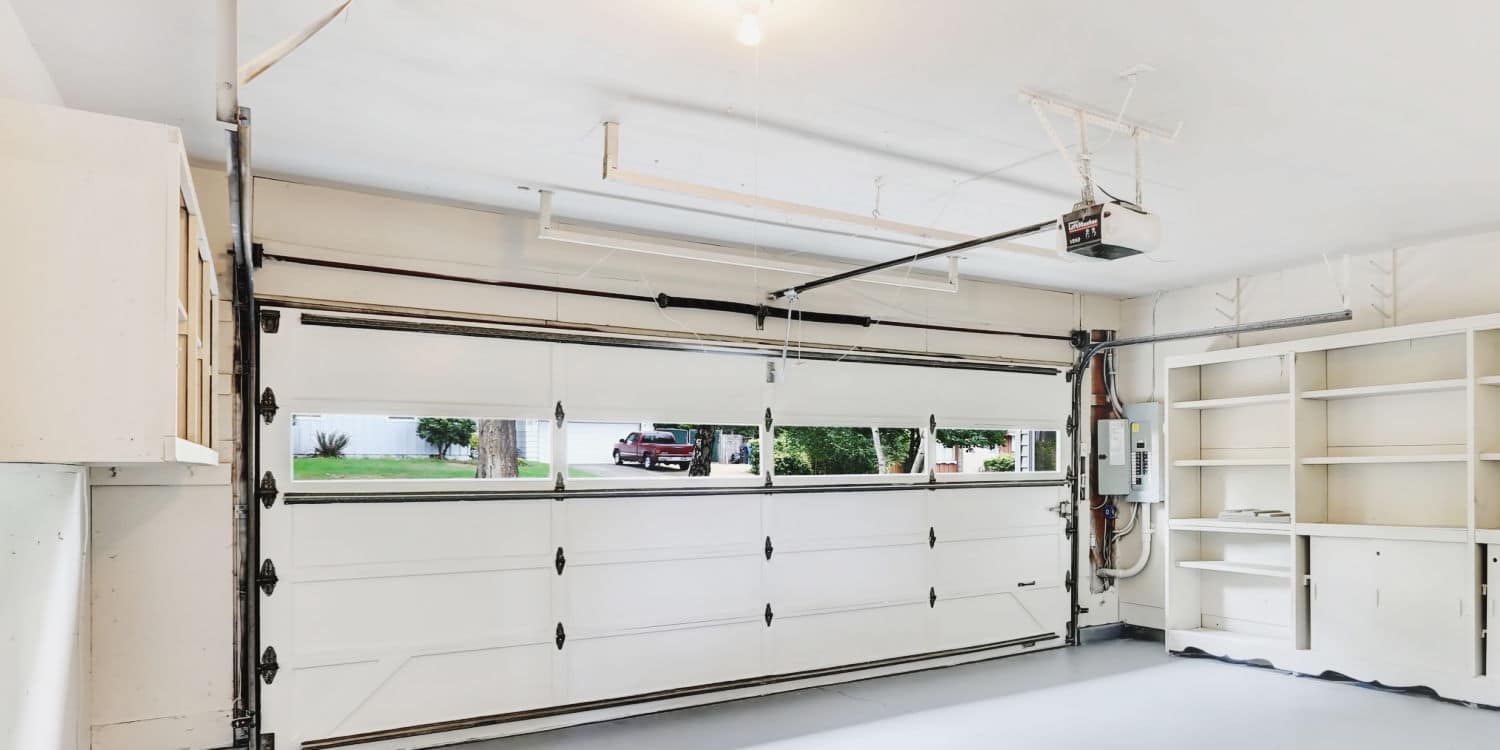Modern furnaces excel at delivering reliable and efficient heat. That doesn’t mean they’re not without problems, however. A common problem you’re likely to face is an excessively noisy furnace. In most cases, you can trace the cause back to the blower on the furnace, whose job is to circulate heated air throughout your home.
An overly noisy furnace blower can put a damper on those quiet moments you want to enjoy in comfort. Before you call up your local HVAC pros, take a moment to study this guide. You may find that the fixes mentioned below are easy, which might help save some money doing them yourself.
Quick Navigation:
Reducing Furnace Blower Noise
Here are a few things you can do to quiet a noisy furnace blower. Many of the fixes mentioned below can be done using simple tools, which should make it easy if you’re the DIYer type. If you suspect something more complicated, be sure to call in your HVAC technician.
1. Check for Loose Screws
Sometimes, the most effective fixes are the easiest. Blower fan set screws and mount screws can back out over time. This can cause the blower wheel to rattle like a cage or the motor itself to shake and thump during operation. Use a Phillips screwdriver to tighten any loose screws you can find.
2. Clean the Blower Fan
You’d be amazed at how much racket a dirty blower fan can cause. Significant debris buildup can unbalance the blower fan and cause it to vibrate. Debris buildup also adds extra strain on the blower motor.
Use a shop vac to suck up dust and debris, and follow up with a clean cloth to wipe off any and all debris from around the blower fan. Make sure the blower fan is well-lubricated and free of any visible damage.
3. Check the Blower Motor
Bad bearings can also cause the blower motor to grind or even howl like a banshee. Start by looking for signs of abnormal wear and tear, including metal particles on the blower motor housing.
Turn the blower motor fan to confirm that it moves freely and without any resistance. If there was a lot of debris and dust, it is a good idea to oil all bearings with either WD-40 or 3-in-1 Oil. The combo of cleaning and oil should take care of most noise issues.
If you do confirm a bad bearing, replace the furnace blower motor immediately!
4. Test the Blower Motor Capacitor
If you notice a squealing sound when the blower motor kicks on, it could be the capacitor going bad. The capacitor holds an electric charge to help kickstart the blower motor, just like it does on AC units. This is a relatively easy part to change out, just be sure you turn off all power and take photos of the wiring before changing the part out.
5. Check for Debris in the Fan Blades
If you hear grinding noises from the furnace blower, check it carefully for any signs of debris buildup. Any debris that gets trapped in the fan blades can cause grinding noises and vibrations. Carefully remove any and all debris buildup from the fan blades.
You would be surprised how often a simple removal and cleaning of dust and junk solves whining and grinding noises in the fan area. To get into all the nooks and crannies, use compressed air and a vacuum to suck it all out.
6. Check the Blower Motor Belt
Many quiet furnace blowers are belt-driven, similar to a car’s engine. A dirty, misaligned, and/or slipping belt can make squealing noises. In a worst-case scenario, the belt can slip off or even break.
Clean the belt with a clean cloth and make sure it’s properly aligned. Don’t forget to check the belt for any signs of wear and tear. Replace the belt if it appears excessively worn.
7. Check the Draft Inducer Fan
Located near the heat exchanger, the draft inducer fan moves combustion gases into the flue pipe while drawing fresh air towards the burners. As with the blower motor, bad bearings can make for a loud draft inducer fan on startup.
If the bearings on the fan motor are bad, replace the motor. Given the draft inducer fan’s location, you may want an HVAC professional to handle the replacement process.
Otherwise, clean the draft inducer fan. Make sure the fan is free of any dust or debris that could affect its operation, and oil the bearings through the oil ports or onto any visible bushings.
Not the Blower? Reduce Duct Noise
Have you checked over everything and still have what seems to be excessive noise in the furnace area? Another way to quiet your furnace involves cutting down on duct noise. Use these tips below to quiet furnace ducts and further silence your furnace system.
8. Add Return Air Ducts
Many ductwork issues involving excessive noise can be traced back to a lack of return air ducts. Adding an additional return air duct can help balance airflow throughout your duct system, allowing for proper air circulation and, more importantly, less noise.
Also, make sure your return air ducts are correctly sized for your furnace. In addition, remove any and all obstructions that get in the way of your return air ducts, including furniture, drapery, and clothing.
9. Seal up the Seams
When you hear a whistling in your air ducts, this is caused by air escaping through the seams and joints in the ducts. Aluminum duct tape is great for sealing off the pathways for air to escape. Besides quieting the air ducts, you’ll improve your overall energy efficiency.
10. Insulate the Ducts
Your furnace ducts act as a superhighway for sound by carrying furnace noises from room to room. A little acoustic insulation wrapped around the ducts can go a long way towards reducing the echoes and rushing of air that’s common with noisy ductwork.
Sound absorption isn’t the only benefit you’ll get by insulating the ducts. Depending on the type of insulation used, you’ll also see a reduction in heat losses. This improves your furnace’s overall efficiency while reducing energy usage, saving you on your heating bills.
11. Duct Expansion
As mentioned earlier, the sheet metal that makes up much of your furnace’s ductwork can make noise from time to time. The sheet metal expands when exposed to the influx of heated air from your furnace and contracts as it cools down. As this happens, you’ll occasionally hear the ducts pop back into shape, like a drum.
Again, these sounds are normal. However, you should double-check your ducts and make sure there aren’t any loose or missing panels.
12. Use Different Air Filters
Furnace air filters are designed to trap dust and other unwanted particulates, preventing them from getting inside your furnace. The more debris your air filter catches, the harder the furnace blower works to pull air through. A clogged air filter can cause your furnace to run harder and louder than usual.
If you haven’t changed your air filter, do so as soon as possible. Changing your furnace air filter on a regular schedule helps reduce noise while putting less stress on your furnace.
Certain types of air filters can prove too restrictive for air to move through, which could make your furnace blower run louder than normal. Air filters with a Minimum Efficiency Reporting Value or MERV rating between 7 and 12 offer effective air filtration without overly restricting airflow.
Avoid using air filters with a MERV 13 rating or higher unless your furnace was specifically designed with high-rated air filters in mind.
Soundproof the Furnace Room
At the end of the day, furnaces are inherently noisy machines. Even after you’ve gone through the other steps mentioned above, you might not eliminate every bit of noise that comes from your furnace.
Instead of simply living with the noise, you can soundproof the room your furnace sits in. Moderate soundproofing should help prevent normal furnace sounds from bleeding into nearby rooms.
How you soundproof your furnace room is up to you. You can add sound-absorbing panels throughout the room to dampen noises or add a layer of noise-reducing drywall to your existing walls with a viscoelastic soundproofing compound (such as Green Glue) in between.
Why is My Furnace so Loud?
A furnace seems simple from the outset, but it’s a complicated mechanical system with motors, belts, and a host of other moving parts. This makes careful troubleshooting a must when diagnosing a noisy furnace. If you know your furnace blower is too loud, we’ve identified several possible problems and solutions you can investigate.
- Humming Noise – Humming noises are quite common for furnaces. The culprit could involve a faulty transformer or capacitor, especially if the furnace blower hums but doesn’t actually move. Improper lubrication can also cause a furnace blower to hum.
- Squealing – In most cases, squealing noises can be traced back to a worn-out or damaged blower fan belt. If your unit doesn’t use a belt, then there may be lubrication or alignment issues with the blower fan itself. Oil all the bearings!
- Ticking Sounds – You may hear loud ticking sounds if there’s an issue with the blower or inducer motor bearings. Vacuum out any dust and oil the bearings.
- Vibration and Rattling – Loose fan mounts can cause the furnace blower to rattle and vibrate when turned on. Loose access panels and ductwork can also cause these issues. In some cases, the furnace blower fan may be off-balance.
- Grinding Noise – Grinding noises usually indicate metal-on-metal contact, whether it’s the blower fan making contact with its housing or a failed bearing inside the motor. Vacuum out debris, sawdust, and dust, before hitting the bearings with oil.
- Thumping Noise – Loud, regular thumping noises may be due to an off-balance furnace blower motor. Furnace blowers may also make this noise if the fan comes into contact with other parts of the housing.
- Rumbles – A rumbling noise may indicate worn-out furnace blower motor bearings or a bad blower motor belt. A dirty draft inducer motor can also cause rumbling noises. Other culprits include dirty burners, faulty pilot light, and a cracked heat exchanger.
You may, however, find that your blower is fine and the furnace noise is coming from elsewhere.
- Whistling and Howling – These noises are consistent with loose ductwork or constricted airflow at the vents. Clogs caused by heavy dust and debris buildup also make for noisier airflow. Loose duct joints can produce a whistling sound at the seams.
- Popping Noise – As your ductwork heats up and cools down, you’ll hear the sheet metal expand and contract in response. As a result, you’ll hear the ducts make a popping sound like a drum. It’s normal and rarely a cause for concern.
Conclusion
A noisy furnace blower isn’t just unbearable to listen to. The incessant racket also signals underlying issues that could lead to a breakdown later on. The above noise reduction steps not only bring peace and quiet back to your home but also help your furnace last longer.





